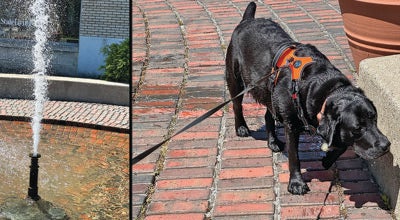Radio preparedness: Local amateur radio operators part of statewide tornado drill
Published 2:06 pm Wednesday, March 20, 2019
If you hear sirens going off and radio chatter about a tornado this morning, don’t panic — it is just a statewide drill so agencies can be prepared in case a real emergency happens.
As part of that, Lawrence County members of Ohio Amateur Radio Association Emergency Service (ARES) will be partnering with the National Weather Service and other radio operators across the state as part of Ohio’s Severe Weather Awareness Week.
The group will be activating weather net
“We do things like this periodically,” said Eddie Jenkins N8URU, president of the Lawrence County ARES. “It helps us stay connected in case there is an emergency.”
Jenkins said that, once a week, they create a radio network so if an emergency does happen, the operators know who everyone is and they all know the procedures and how to pass information back and forth.
“A lot of communities will be setting off sirens, but we will not be doing that here,” he said. “We are not in a tornado-prone area. We participate because the rest of the state is.”
Jenkins said this year, they would be activating a digital network that ties in with Internet and radio operators. The system will be activated in Columbus and the Lawrence County ARES operators will check in.
“I don’t think we’ve every done anything like that before, so that is something new,” he said.
Mike Love, WB8YKS, an Lawrence County ARES public information officer said it is important for the all-volunteer group to hone their skills for emergency situations when they might be called on to assist agencies like the Lawrence County Emergency Management Agency, the Red Cross, the Salvation Army or other groups as needed.
And it’s all about one thing.
“The main thing we take from exercises like this it training, training, training,” Love said. “Our amateurs are trained by the National Weather Service so they will know what to look for; what type of cloud, what type of rotation. They will look for damage such as trees down, they will estimate wind speeds.”
Love pointed out that the weather net was activated last week when high winds tore through the Cincinnati area.
“These are things that happen in real time,” he said. “This is a very timely event as we move into spring time.”
Love said that, although there is a lot of technology available, such as Doppler radar, in an emergency, there is still a need for groups like radio operators.
“It’s a matter of having boots on the ground,” he said, adding Doppler radar can’t see below 4,000 feet and that’s where the radio operators come into play. When the radio operators get confirmation of a tornado hitting an area, they can quickly relay the information to the authorities so emergency crews can get there to provide assistance.




